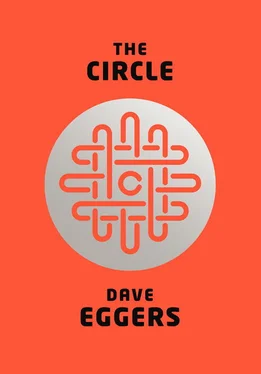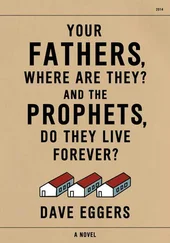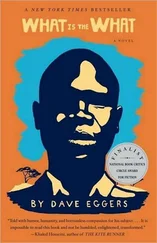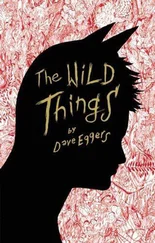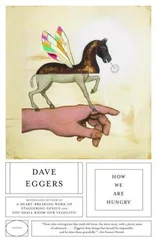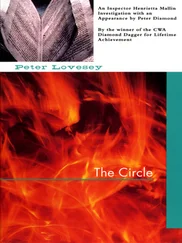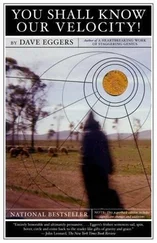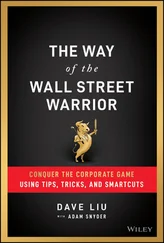“Ty looks checked out, right?” Annie said. “But he couldn’t be. None of us would be here if he wasn’t a fucking brilliant management master, too. I should explain the dynamic. You’ll be moving up quickly so I’ll lay it out.”
Ty, born Tyler Alexander Gospodinov, was the first Wise Man, Annie explained, and everyone always just called him Ty.
“I know this,” Mae said.
“Don’t stop me now. I’m giving you the same spiel I have to give to heads of state.”
“Okay.”
Annie continued.
Ty realized he was, at best, socially awkward, and at worst an utter interpersonal disaster. So, just six months before the company’s IPO, he made a very wise and profitable decision: he hired the other two Wise Men, Eamon Bailey and Tom Stenton. The move assuaged the fears of all investors and ultimately tripled the company’s valuation. The IPO raised $3 billion, unprecedented but not unexpected, and with all monetary concerns behind him, and with Stenton and Bailey aboard, Ty was free to float, to hide, to disappear. With every successive month, he was seen less and less around campus and in the media. He became more reclusive, and the aura around him, intentionally or not, only grew. Watchers of the Circle wondered, Where is Ty and what is he planning? These plans were kept unknown until they were revealed, and with each successive innovation brought forth by the Circle, it became less clear which had originated from Ty himself and which were the products of the increasingly vast group of inventors, the best in the world, who were now in the company fold.
Most observers assumed he was still involved, and some insisted that his fingerprints, his knack for solutions global and elegant and infinitely scalable, were on every major Circle innovation. He had founded the company after a year in college, with no particular business acumen or measurable goals. “We used to call him Niagara,” his roommate said in one of the first articles about him. “The ideas just come like that, a million flowing out of his head, every second of every day, never-ending and overwhelming.”
Ty had devised the initial system, the Unified Operating System, which combined everything online that had heretofore been separate and sloppy—users’ social media profiles, their payment systems, their various passwords, their email accounts, user names, preferences, every last tool and manifestation of their interests. The old way—a new transaction, a new system, for every site, for every purchase—it was like getting into a different car to run any one kind of errand. “You shouldn’t have to have eighty-seven different cars,” he’d said, later, after his system had overtaken the web and the world.
Instead, he put all of it, all of every user’s needs and tools, into one pot and invented TruYou—one account, one identity, one password, one payment system, per person. There were no more passwords, no multiple identities. Your devices knew who you were, and your one identity—the TruYou , unbendable and unmaskable—was the person paying, signing up, responding, viewing and reviewing, seeing and being seen. You had to use your real name, and this was tied to your credit cards, your bank, and thus paying for anything was simple. One button for the rest of your life online.
To use any of the Circle’s tools, and they were the best tools, the most dominant and ubiquitous and free, you had to do so as yourself, as your actual self, as your TruYou. The era of false identities, identity theft, multiple user names, complicated passwords and payment systems was over. Anytime you wanted to see anything, use anything, comment on anything or buy anything, it was one button, one account, everything tied together and trackable and simple, all of it operable via mobile or laptop, tablet or retinal. Once you had a single account, it carried you through every corner of the web, every portal, every pay site, everything you wanted to do.
TruYou changed the internet, in toto, within a year. Though some sites were resistant at first, and free-internet advocates shouted about the right to be anonymous online, the TruYou wave was tidal and crushed all meaningful opposition. It started with the commerce sites. Why would any non-porn site want anonymous users when they could know exactly who had come through the door? Overnight, all comment boards became civil, all posters held accountable. The trolls, who had more or less overtaken the internet, were driven back into the darkness.
And those who wanted or needed to track the movements of consumers online had found their Valhalla: the actual buying habits of actual people were now eminently mappable and measurable, and the marketing to those actual people could be done with surgical precision. Most TruYou users, most internet users who simply wanted simplicity, efficiency, a clean and streamlined experience, were thrilled with the results. No longer did they have to memorize twelve identities and passwords; no longer did they have to tolerate the madness and rage of the anonymous hordes; no longer did they have to put up with buckshot marketing that guessed, at best, within a mile of their desires. Now the messages they did get were focused and accurate and, most of the time, even welcome.
And Ty had come upon all this more or less by accident. He was tired of remembering identities, entering passwords and his credit-card information, so he designed code to simplify it all. Did he purposely use the letters of his name in TruYou? He said he realized only afterward the connection. Did he have any idea of the commercial implications of TruYou? He claimed he did not, and most people assumed this was the case, that the monetization of Ty’s innovations came from the other two Wise Men, those with the experience and business acumen to make it happen. It was they who monetized TruYou, who found ways to reap funds from all of Ty’s innovations, and it was they who grew the company into the force that subsumed Facebook, Twitter, Google, and finally Alacrity, Zoopa, Jefe, and Quan.
“Tom doesn’t look so good here,” Annie noted. “He’s not quite that sharky. But I hear he loves this picture.”
To the lower left of Ty was Tom Stenton, the world-striding CEO and self-described Capitalist Prime —he loved the Transformers—wearing an Italian suit and grinning like the wolf that ate Little Red Riding Hood’s grandmother. His hair was dark, at the temples striped in grey, his eyes flat, unreadable. He was more in the mold of the eighties Wall Street traders, unabashed about being wealthy, about being single and aggressive and possibly dangerous. He was a free-spending global titan in his early fifties who seemed stronger every year, who threw his money and influence around without fear. He was unafraid of presidents. He was not daunted by lawsuits from the European Union or threats from state-sponsored Chinese hackers. Nothing was worrisome, nothing was unattainable, nothing was beyond his pay grade. He owned a NASCAR team, a racing yacht or two, piloted his own plane. He was the anachronism at the Circle, the flashy CEO, and created conflicted feelings among many of the utopian young Circlers.
His kind of conspicuous consumption was notably absent from the lives of the other two Wise Men. Ty rented a ramshackle two-bedroom apartment a few miles away, but then again, no one had ever seen him arrive at or leave campus; the assumption was that he lived there. And everyone knew where Eamon Bailey lived—a highly visible, profoundly modest three-bedroom home on a widely accessible street ten minutes from campus. But Stenton had houses everywhere—New York, Dubai, Jackson Hole. A floor atop the Millennium Tower in San Francisco. An island near Martinique.
Eamon Bailey, standing next to him in the painting, seemed utterly at peace, joyful even, in the presence of these men, both of whom were, at least superficially, diametrically opposed to his values. His portrait, to the lower right of Ty’s, showed him as he was—grey-haired, ruddy-faced, twinkly-eyed, happy and earnest. He was the public face of the company, the personality everyone associated with the Circle. When he smiled, which was near-constantly, his mouth smiled, his eyes smiled, his shoulders even seemed to smile. He was wry. He was funny. He had a way of speaking that was both lyrical and grounded, giving his audiences wonderful turns of phrase one moment and plainspoken common sense the next. He had come from Omaha, from an exceedingly normal family of six, and had more or less nothing remarkable in his past. He’d gone to Notre Dame and married his girlfriend, who’d gone to Saint Mary’s down the road, and now they had four children of their own, three girls and finally a boy, though that boy had been born with cerebral palsy. “He’s been touched,” Bailey had put it, announcing the birth to the company and the world. “So we’ll love him even more.”
Читать дальше
